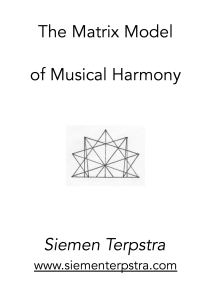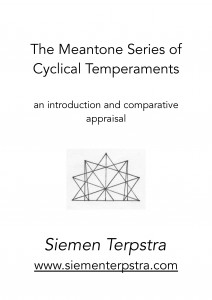 The principle of harmonia – the mediation between extremes through the application of logos or proportion – is the preeminent, central concern of Pythagorean cosmology and philosophy. According to Philolaus (b. c. 470 B.C.E.), the earliest Pythagorean whose fragments have survived, “Nature in the universe was harmonized from Limited and Unlimited elements, both the totality of the kosmos and all the things in it.” Moreover, “Harmonia comes to be in all respects out of contraries; for harmonia is the unity of multiplicity, and the agreement of things that disagree.” The nature of harmonia, the “fitting together” of extremes, was studied by the Pythagoreans on the monochord.
The principle of harmonia – the mediation between extremes through the application of logos or proportion – is the preeminent, central concern of Pythagorean cosmology and philosophy. According to Philolaus (b. c. 470 B.C.E.), the earliest Pythagorean whose fragments have survived, “Nature in the universe was harmonized from Limited and Unlimited elements, both the totality of the kosmos and all the things in it.” Moreover, “Harmonia comes to be in all respects out of contraries; for harmonia is the unity of multiplicity, and the agreement of things that disagree.” The nature of harmonia, the “fitting together” of extremes, was studied by the Pythagoreans on the monochord.
(Quoted from the Editors Introduction by David Fideler)
This article was published in Alexandria: the Journal of the Western Cosmological Traditions, Volume 2, 1993
Click on the link to see the article in your browser or right-click to save the file to your drive.
www.siementerpstra.com/writings/Terpstra-IntroductionMonochord.pdf
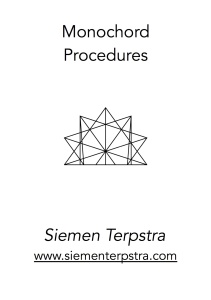 The divisions of the monochord string can be represented by four methods: proportional ratios, string lengths, logarithms, and cents. The modern division by cents is derived from the 18th century application of logarithms to music, and cannot be directly applied onto the instruments without further calculation. hence I will only consider ratios and string lengths here. The calibration by string lengths is derivative from the proportional system. It overcomes the cumbersome nature of fractional ratios by clearing fractions through a least common multiple chose as the length of the open string.
The divisions of the monochord string can be represented by four methods: proportional ratios, string lengths, logarithms, and cents. The modern division by cents is derived from the 18th century application of logarithms to music, and cannot be directly applied onto the instruments without further calculation. hence I will only consider ratios and string lengths here. The calibration by string lengths is derivative from the proportional system. It overcomes the cumbersome nature of fractional ratios by clearing fractions through a least common multiple chose as the length of the open string.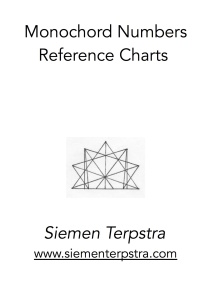 The author puts together a collection of 3-limit, 5-limit and 7-limit monochord divisions. He lays them out on the matrix and presents both the monochord division and its reciprocal harmonic series component. He emphasizes the invariant zone between the reciprocals.
The author puts together a collection of 3-limit, 5-limit and 7-limit monochord divisions. He lays them out on the matrix and presents both the monochord division and its reciprocal harmonic series component. He emphasizes the invariant zone between the reciprocals.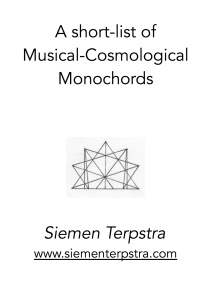 This list of monochord divisions was extracted from my MONOCHORD NUMBERS REFERENCE MATERIAL. In that paper I generated every consecutive just monochord (the series terminating at an arbitrary level of interval complexity) by setting up a strict mathematical rubric. In this paper I selected from this collection the monochords which have the greatest musical and cosmological relevance. I have also presented them in a slightly different manner, in order to bring out the ‘family relations’ between the divisions. It is assumed that the reader of this paper has some familiarity with the monochord concept, and has read my
This list of monochord divisions was extracted from my MONOCHORD NUMBERS REFERENCE MATERIAL. In that paper I generated every consecutive just monochord (the series terminating at an arbitrary level of interval complexity) by setting up a strict mathematical rubric. In this paper I selected from this collection the monochords which have the greatest musical and cosmological relevance. I have also presented them in a slightly different manner, in order to bring out the ‘family relations’ between the divisions. It is assumed that the reader of this paper has some familiarity with the monochord concept, and has read my 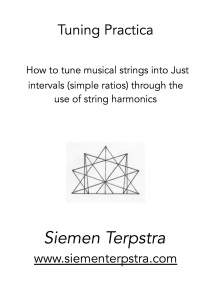 We have seen that the ancient tuner-scientists used the monochord in order to set up the consonant ratios of music. The monochord divisions are associated with the UNDER NUMBER SERIES outlined in the monochord articles. The central polarity of music, that which indicates the relation of reciprocity between wavelength and frequency, results in the existence of the OVER NUMBER SERIES, as well as the polarity between “up” and “down” within musical pitch. Just as the monochord divisions are connected with the Under Number Series and with wavelength, so also the Over Number Series connects with frequency and with the string Harmonics. The Under Number Series falls in pitch, whereas the Over Number Series rises in pitch.
We have seen that the ancient tuner-scientists used the monochord in order to set up the consonant ratios of music. The monochord divisions are associated with the UNDER NUMBER SERIES outlined in the monochord articles. The central polarity of music, that which indicates the relation of reciprocity between wavelength and frequency, results in the existence of the OVER NUMBER SERIES, as well as the polarity between “up” and “down” within musical pitch. Just as the monochord divisions are connected with the Under Number Series and with wavelength, so also the Over Number Series connects with frequency and with the string Harmonics. The Under Number Series falls in pitch, whereas the Over Number Series rises in pitch.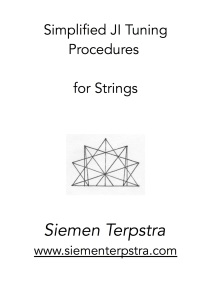 For manay years I have been encouraging the use of JI tuning for harps, zithers, and other appropriate stringed instruments. The results of many workshops have impressed upon me the need for a simplified tuning procedure for implementing JI on acoustical stringed instruments. Certain recurring mental blocks keep reappearing among musicians, for example, the inability to handle ratios. At the same time, many of the musicians I encounter who have a genuine interest in JI are implementing it solely through electronic media, especially synthesizers. The electronic keyboards have great potential in exploring new tunings and timbres, but re-tuning them is (dare I say it?) almost
For manay years I have been encouraging the use of JI tuning for harps, zithers, and other appropriate stringed instruments. The results of many workshops have impressed upon me the need for a simplified tuning procedure for implementing JI on acoustical stringed instruments. Certain recurring mental blocks keep reappearing among musicians, for example, the inability to handle ratios. At the same time, many of the musicians I encounter who have a genuine interest in JI are implementing it solely through electronic media, especially synthesizers. The electronic keyboards have great potential in exploring new tunings and timbres, but re-tuning them is (dare I say it?) almost 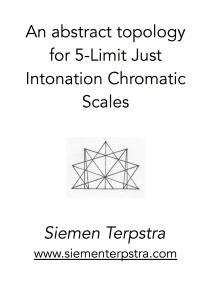 Each pattern defines a Class of Just scales, each Class embodying twelve primary modes (not presented here). Symmetrical structures are centred in the page; whereas, non-symmetrical patterns are paired by complementarity. Historical references are presented where appropriate. The classification progresses from generally “horizontal” tuning to generally “vertical” tunings.
Each pattern defines a Class of Just scales, each Class embodying twelve primary modes (not presented here). Symmetrical structures are centred in the page; whereas, non-symmetrical patterns are paired by complementarity. Historical references are presented where appropriate. The classification progresses from generally “horizontal” tuning to generally “vertical” tunings.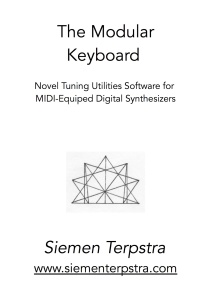 Back in the middle 1980’s I had an idea for converting a standard keyboard into a keyboard capable of applying 53-equal temperament. It was developed for the Apple 2E computer synthesizer called the Soundchaser. It uses software to change subsets of the wider field of possibilities. This file also includes a printout of the computer program. The project was funded by a Canada Counsel Arts Grant.
Back in the middle 1980’s I had an idea for converting a standard keyboard into a keyboard capable of applying 53-equal temperament. It was developed for the Apple 2E computer synthesizer called the Soundchaser. It uses software to change subsets of the wider field of possibilities. This file also includes a printout of the computer program. The project was funded by a Canada Counsel Arts Grant.